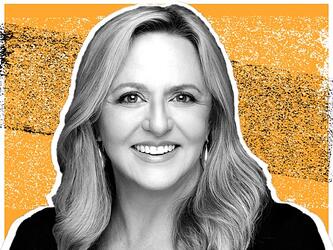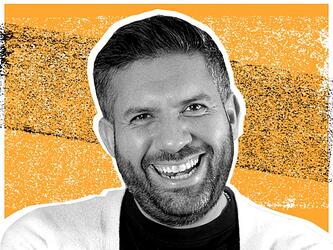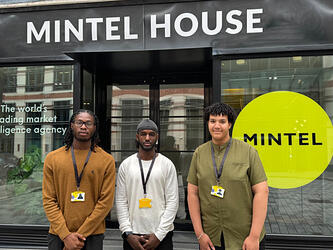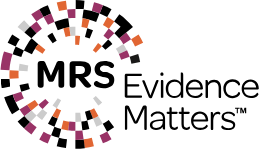Article Not Available
If you’re the boss of a major research agency, change is the order of the day. Whether that order comes from clients, industry commentators or your own staff – you can’t escape the demand for it or the need for it.
Richard Jameson has been managing director of GfK NOP, the UK arm of German group GfK, since 2009. As he sees it, agencies must evolve into “broader information partners for clients”.
“I feel like we at GfK are strongly on that road, but I think for the health of the industry everyone needs to be thinking about passive data streams and other data sources – about using the core analytic skills we’ve got in order to become a true aggregator and consolidator of information.”
The concern, Jameson says, is whether change can occur fast enough. “There are always adjacent industries which would like to eat some of our lunch,” he says. “I tend to be less concerned about management consultants” – a traditional research industry bogeyman – “because they operate at a different level to us and they have a different set of buying points. I think the bigger threat comes from the database marketing companies who hold datasets that can be endlessly mined for insights. I think we need to embrace that, and I think we need to be partnering with those companies and using those data sources on behalf of our clients.”
“We’re on a learning curve but we have some skills that can certainly put us in a sweet spot as the market for big data develops”
On a learning curve
GfK was crowned Best Agency with a turnover above £20m at the MRS Awards in December, partly in recognition of the steps it is taking to redefine itself and redesign what it offers clients. Clients are “dipping their toes” in the pools of new data sources, Jameson says. “What they want from an agency like us is a feeling that we can go there with them, that we can help them future-proof their tracking studies, their approach to innovation, their approach to product testing.
“Typically in the contracts we’re winning the use of things like passive behavioural measurement is a minority element. But clients want to know that they have the potential to use that more and more, and maybe to rely a little less on customer opinions and survey research in the future, and that we are the partner that can take them there.”
When it comes to dealing with these new data sources, Jameson acknowledges that GfK NOP – and the research industry as a whole – is on a learning curve. “Everyone is. Our clients are, even companies like Google.” But Jameson believes researchers already have skills that are useful in a big data world. “The ability to summarise, analyse and draw conclusions from large datasets is a core strength of the market research industry,” he says.
“So, yes, we’re on a learning curve but we have some skills that can certainly put us in a sweet spot as that market develops. At the same time, we as an industry need to be bringing in new types of people – people with real heavy-duty data mining and data analysis skills. We’re in a lucky position at GfK in that we have a data science heritage: we’ve got something approaching 200 professional marketing scientists around the world, typically working in hubs. For us the important thing is to make sure that those teams are regularly sharing their knowledge, so that when we learn something new in the UK that is shared globally with the marketing science community.”
As well as big behavioural datasets, companies are also faced with an overabundance of attitudinal data thanks to the advent of DIY online survey tools. Here Jameson sees a challenge to the data collection services that have traditionally been the bread-and-butter of many research agencies. And yet he says: “Things like Google Consumer Surveys could actually be a great source of data for us in the research industry as long as we can move our mindset away from being owners of the means of data production to aggregators of data.”
Meanwhile, he says, this easy availability of cheap, plentiful data could open up the market for research services in a way akin to what Google did for online advertising. “There are many small and medium-sized companies that have never been able to afford the services of a traditional research agency. They can now buy data pretty cost effectively, and I think we could be putting together services that meet the needs of a whole new set of smaller clients.”
Looking good
To talk about change in MR but focus only on the challenges and opportunities around data collection is to miss half the story. In its award citation, GfK NOP was praised for its “strong client focus” – and this focus has led it to ask exactly what it is that clients want from agencies in terms of insight delivery.
“One of the things that we identified two or three years ago was that the way we were presenting our results was not as engaging as it might be, and our direct clients had less and less time to absorb and draw conclusions from our data,” says Jameson.
“If we go several steps up the corporate ladder, their bosses have almost no time to consider our work, so we have to make the research outputs and the conclusions and the implications for business strategy as engaging and immediate as possible.”
In trying to address this need, GfK NOP has sharpened up its multimedia and data visualisation capabilities. Jameson says: “As part of our marketing team, for example, we have multimedia designers – three guys that are working purely on how to take this great volume of raw data and turn it into something that is not only easily accessible and usable by clients, but – in the case of the most senior clients – we need to be able get the key points across in a two, three or four minute video.”
Certainly GfK NOP isn’t the only research agency moving down this road but it has chosen to benchmark itself against the outputs of media companies, rather than its immediate rivals. “I think everyone is building very good reporting and analysis skills at the moment, so we have to be at that higher level,” says Jameson.
Culture change
In many respects, Jameson says, what agencies are going through now is a process of “culture change” – something that will take three to five years to come to fruition. Which isn’t to say, ‘See you in 2018’. Many research suppliers started down this path after the financial crisis of 2008. But we as an industry have been talking about it far longer than that, he says.
“Five or six years ago we made statements about where we wanted to go, and then waited for the business to move on. But actually the movement was very slow. We needed catalytic events,” he says. “In the case of GfK in the UK, we did several things that we believe were catalysts. One was to bring in a head of insight who was cross-product and cross-industry sector. His job was to think constantly about what something might mean for clients? How was it going to impact their business strategy? How were we going to make our data and our findings actionable? So he spent a great deal of time developing consultative approaches and making our staff comfortable with them.
“Until fairly recently I was surprised to see how many researchers were still putting their conclusions and recommendations at the end of a presentation. A management consultant would never do that because what the client is after is action – so you have to show them the action first and then provide whatever evidence you need to show how you came to those conclusions.”
Inevitably, talk of actionable research leads to questions about how companies can measure the return generated by their research investments. “There are a number of things that we’re doing there,” says Jameson.
“We are having more structured and more regular account reviews with clients, and in those reviews we want as much information as possible about what has been done to change business performance as a result of our research.
“One of the industry’s problems in the past has been that we’ve happily taken a big tracker from a client and run it for a number of years, but we haven’t taken that step of asking ourselves, ‘What is this delivering?’ Doing that, I think, will allow us to have a real partnership with our clients,” Jameson says. “It will allow us to come to a shared view on whether a piece of research is delivering value for money – and if it’s not, we can work to develop the service into something that will.”

We hope you enjoyed this article.
Research Live is published by MRS.
The Market Research Society (MRS) exists to promote and protect the research sector, showcasing how research delivers impact for businesses and government.
Members of MRS enjoy many benefits including tailoured policy guidance, discounts on training and conferences, and access to member-only content.
For example, there's an archive of winning case studies from over a decade of MRS Awards.
Find out more about the benefits of joining MRS here.










2 Comments
Simon Chadwick
13 years ago
Tremendous to see that Richard has such a good grip on what clients want and where the industry is going; and that he doing something about it; and that the industry has recognized this with this award. Much kudos, Richard, and long may you reign!
Like Reply Report
David Zotter
13 years ago
Wow! Those Ludgate House people always have such an impressive offering. Great article!
Like Reply Report